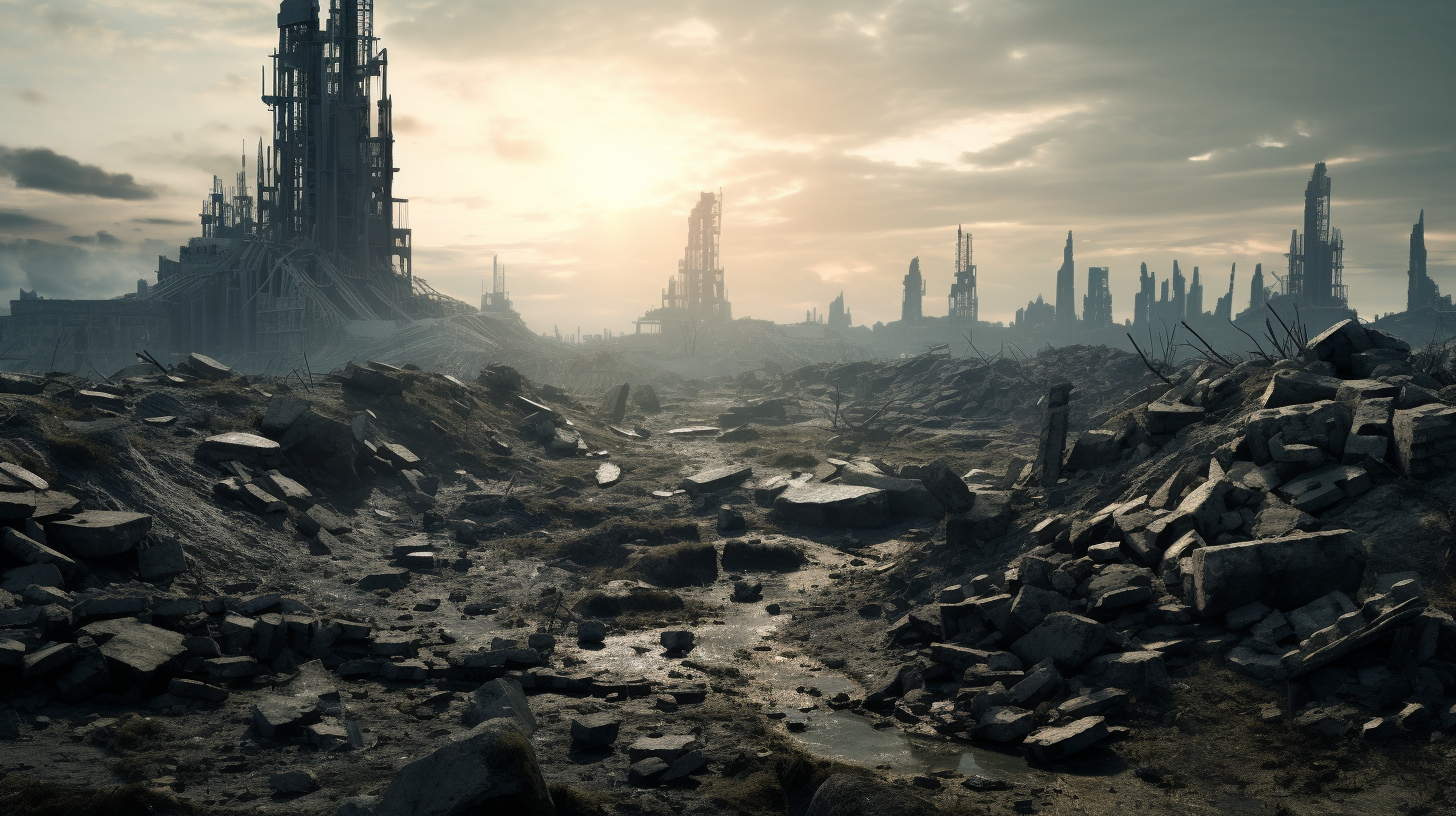The landscapes we traverse today are starkly different from the romanticized versions of history textbooks, perhaps serving as a warning against human conceit. Ancient ruins once told stories of bygone civilizations – today, our decay is not ensconced in antiquity; it is immediate, prevalent, and omnipresent – a living testament to hubristic epochs. In this article, we explore the Monuments of Hubris scattered across our desolate Earth, icons resilient in their physical form yet epitaphs to an era of environmental plunder.
Take, for instance, the skeletal remains of twisted metal that were once skyscrapers – glass and steel monoliths – erected in defiance of nature’s sanctity. As encroaching desert sands or rising seas inch over metropolitan graveyards, they whisper of an industrial age when megalopolises vied for dominion over the skies. These structures, bereft of life but replete with memories, tower over dilapidated streets where humans once bustled, now reclaimed by feral creatures and overgrowth.
In an ironic twist of fate, green architecture, heralded as the harbinger of a symbiotic future, festers amidst the devastation, a mockery of what could have been. The ‘living’ buildings, conceived with integrated ecosystems, now suffocate under the virulent spread of nature’s untamed return. Their once revolutionary designs, now subject to the ravages of Nature’s profound indifference, stand as bleak monuments to our ecological naivety.
Consider, too, the ‘Iron Harvest’ – a somber legacy of conflicts past. Artillery shells and buried ordnances that once ripped asunder soldiers, now unearthed by swelling rivers and retreating ice, serve as eerie landmarks within our blighted terrains. These lethal relics, inadvertently emblematic of our ancestors’ destructive tendencies, mirror present-day ecological battles; only now, we face a foe of our making whom we cannot defeat – a changing climate.
In this Age of Desolation, a new kind of pilgrimage emerges. A journey through ruins that echo the cacophony of marketplaces where priceless nature was traded for transient convenience. The half-submerged shopping complexes, with their cavernous interiors now aquariums to marine specters, are testament to consumerism’s disregard for planetary health – submerged temples to an ideology that drowned itself.
The holy grails of our time are not enchanting. They are the industrial waste sites that dot our landscapes like pockmarks, filled not with sanctifying waters but the seepage of toxic refuse into the Earth’s already weakened veins. The ‘technofossils’ of an age that believed in endless growth lie in layers upon the Anthropocene strata, the geological testimony to our unyielding faith in innovation without conscience.
These monuments are everywhere, from the irradiated expanses that once were lush with forest life to the dunes of plastic debris where oceans teemed. They are the drought-stricken agoras, and the regions shadowed by perpetual fires. It is within these vestiges that we witness the culmination of ignored warnings – we walk our futures’ foregone conclusions in this dystopian now.
Our article concludes, much like our future seems to, with a dystopian riddle: What are monuments, if not the lingering shadows of our past, blighting the potential for sunrise in our tomorrows? They persist, against the odds, not as beacons of pride or nostalgia but as solemn reminders of the arrogance that bore them into existence.
